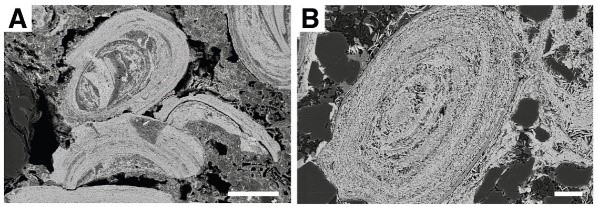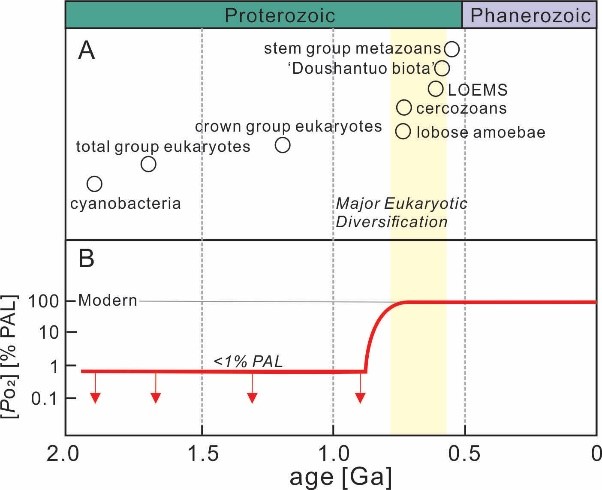The nature of the relationships between surface oxygenation and evolutionary ecology of early complex life remains highly debated, due to the uncertainty of the oxygen level (pO2) of the ocean-atmosphere system during Earth’s intervening history (i.e., the mid-Proterozoic, 1.9-0.9 Ga). In this study, Associate Prof. WANG Changle of the Institute of Geology and Geophysics, Chinese Academy of Sciences (CAS) found that O2 remained at extremely low levels in the ocean-atmosphere system for most of Earth’s history, and showed that a rise in oxygen occurred in step with the evolution and expansion of complex eukaryotic ecosystems.
This work was published in Proceedings of the National Academy of Sciences of the United States of America, Feb. 2022.
Researchers from McGill University, Georgia Institute of Technology, University of California Riverside, and Yale University were also involved in the study.
There are several geochemical indices from ancient sedimentary rocks which have been employed as proxies for mid-Proterozoic atmospheric pO2, predominantly the abundance or isotopic composition of redox-sensitive trace metals in marine carbonate rocks or shales. However, atmospheric pO2 estimates from these proxies are often characterized by high uncertainties, suffer from apparently conflicting inferred pO2 histories, or a combination of the two factors. For this reason, a robust, mechanistically understood and sensitive proxy for mid-Proterozoic O2 levels is required.
To gain insight into the O2 levels of mid-Proterozoic shallow seawater, the iron (Fe) isotope compositions of Proterozoic and Phanerozoic ironstones from different localities were analyzed, due to the fact that ironstones feature ooids (Figure 1) and are deposited in shallow marine environments. Importantly, compared to paleoredox proxies, the Fe isotopic composition of Fe-rich chemical sedimentary rocks is expected to be strongly rock-buffered and resistant to post-depositional alteration.

Figure 1. Back-scattered electron images of Proterozoic ironstones. The scale bars are 100 μm (image by WANG Changle).
The mid-Proterozoic ironstones possess highly variable and mostly positive Fe isotope compositions, whereas the younger equivalents display a narrow range of isotopic compositions, which are indistinguishable from those of hydrothermal and igneous ferrous Fe (Fe(II)) sources. These characteristics indicate that the partial oxidation of dissolved Fe(II) was characteristic of Proterozoic shallow marine environments, whereas younger ironstones formed via complete oxidation of Fe(II).
Based on the results of the Fe(II) oxidation kinetic modelling approach, partial Fe(II) oxidation in mid-Proterozoic ironstones are shown to be most compatible with shallow seawater O2 contents below ~5 μmol/kg, corresponding to atmospheric O2 levels below ~1% present atmospheric level (PAL). Furthermore, the ironstone data suggest a change in surface O2 levels in the Tonian Period, and narrow down the timing of Neoproterozoic Oxygenation Event to between ca. 900–750 Ma, coincident with an apparent rise in eukaryotic ecosystem complexity (Figure 2).

Figure 2. Summary of key late Paleoproterozoic-Phanerozoic changes in both microfossils (A) and atmospheric pO2 (B) (image by WANG Changle).
The ironstone record provides critical new support for the idea that surface O2 levels were changing in step with eukaryotic evolution in the Proterozoic, and reveal that Earth is capable of stabilizing at low atmospheric oxygen levels, with important implications for the exploration of exoplanet biosignatures.
This work was supported by the Key Research Program of Frontier Sciences, CAS, the Key Research Program of the Institute of Geology and Geophysics, CAS, and the National Natural Science Foundation of China.
Contact:
Changle Wang
Institute of Geology and Geophysics, Chinese Academy of Sciences
Phone: 86-10-82998184
E-mail: wangcl@mail.iggcas.ac.cn